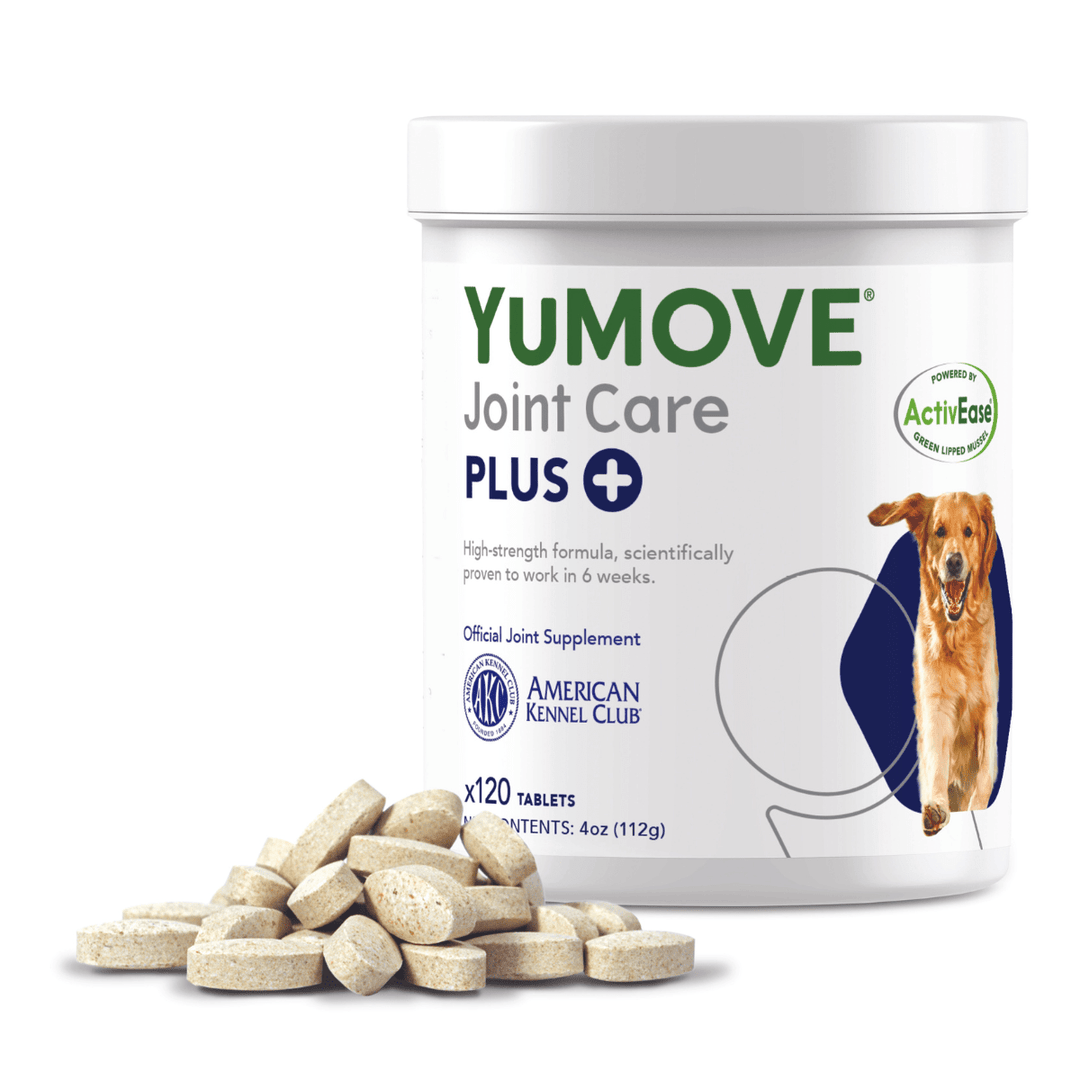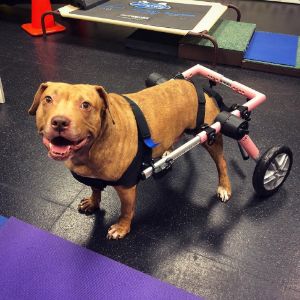- May 31, 2023
10 Ways to Help Your Pet with Stiff or Aching Joints

Caring for a pet with stiff or aching joints can be challenging, but with the right approach, you can improve their health and overall well-being. By incorporating tailored exercise routines, creating a safe living environment, and more, you can significantly relieve your pet’s discomfort.
10 Ways to Help Your Pet With Joint Pain or Stiffness
In this article, you’ll discover effective strategies to support your pet’s joint health and alleviate discomfort caused by stiffness or aching joints, ensuring their overall comfort and happiness.
1. Maintain a Healthy Weight
Helping your pet maintain a healthy weight is crucial for reducing stress on their joints and preventing further discomfort. When pets carry extra pounds, it puts additional strain on their joints, leading to stiffness and pain. That’s why it’s important to monitor your pet’s weight.
Be sure to consult with your veterinarian for advice on an ideal weight range. They can also recommend suitable diets, portion sizes, and exercise routines that cater to your pet’s specific needs. Keeping your pet at a healthy weight is also necessary for their overall well-being.
2. Offer Joint Supplements

Introducing joint supplements into your pet’s diet can be an effective way to promote joint health and alleviate discomfort associated with stiff or aching joints. Some popular supplements, such as glucosamine and chondroitin, support the maintenance and repair of cartilage in the joints,
However, other vitamins like omega-3 fatty acids can help reduce inflammation. Always consult with your veterinarian before starting a new supplement regimen, as they will help you choose high-quality products based on your pet’s needs and ensure they take the proper dosage.
3. Provide Probiotics
If your dog has an inflammatory type of arthritis, give your dog Pre+ Probiotic from Honest Paws. Good bacteria can have an impact on inflammation, reducing common biomarkers of this problem. These include C-reactive protein (CRP), common in pets who have arthritis.
As a rule, pets with inflammatory arthritis will have inflammation in the intestinal tract, which increases intestinal permeability. This allows certain bacteria to gather in the intestinal barrier. However, probiotics may be able to decrease this type of inflammation right at its source.
4. Implement Gentle Exercise Routines
Incorporating gentle, low-impact exercises into your pet’s daily routine can significantly benefit their joint health while also minimizing the risk of injury or increasing existing pain. Activities such as swimming or controlled leash walks are perfect options for maintaining mobility and flexibility.
Be mindful of your pet’s limitations and daily needs, and adjust the exercise intensity accordingly. If you’re unsure about suitable activities for your pet or if they experience discomfort during exercise, consult your veterinarian for personalized recommendations and guidance.
5. Apply Warm Compresses
Using warm compresses can offer relief for pets experiencing stiffness or discomfort in their joints, even if the pain is chronic. Gently applying a warm cloth or heating pad to the affected area helps stimulate blood circulation, which in turn can reduce inflammation and ease joint pain.
Ensure the heat source is always at a comfortable temperature and wrapped in a towel to avoid direct contact with your pet’s skin, preventing burns. Monitor your pet closely while applying the warm compress, and keep treatments short, around 10-15 minutes, to provide optimal comfort.
6. Give Regular Massages
Massaging your pet can help alleviate tight muscles and tension surrounding their joints, promoting better mobility and comfort. It can also increase blood circulation. To effectively massage your pet, use gentle yet firm pressure while working on affected areas.
While massaging, make sure not to cause any discomfort by pressing too hard or for too long. If you’re unsure about proper massage techniques, consider consulting with a certified animal massage therapist or seek advice from your vet to maximize the benefits for your beloved pet.
7. Use Orthopedic Beds
Invest in an orthopedic bed designed for pets with aching joints, as they provide extra support and comfort during rest periods. Beds that contain memory foam or other supportive materials can bring comfort to your pet’s body because it eases the pressure off their joints and muscles.
Not only do orthopedic beds help alleviate joint-related discomfort, but they also promote quality sleep and overall well-being. Always opt for a bed that is appropriately sized for your pet, and consider one with a waterproof or washable cover to ensure easy maintenance and hygiene.
8. Try Physical Therapy

Physical therapy is an excellent option for pets experiencing joint pain, as it can improve strength, flexibility, balance, and overall well-being. A trained animal physical therapist can design customized exercise programs that focus on improving joint mobility, among other things.
By targeting specific areas, these exercises help to optimize your pet’s functional abilities while simultaneously relieving pain and discomfort. Consult with your vet for referrals to reputable animal physical therapists in your area, and always follow prescribed therapy schedules.
9. Consider Medication Options
Discuss suitable medications with your vet, such as anti-inflammatory drugs or pain relievers, to help manage your pet’s discomfort more effectively. These medications can significantly improve your pet’s quality of life. Even a veterinarian-backed dog joint supplement may do a lot of good for your pet.
It’s crucial to follow the prescribed dosages and monitor your pet closely for any potential side effects. Keep in mind that medication should be used with other treatments like supplements, physical therapy, and proper exercise to address the root cause of stiffness or aching joints.
10. Create a Comfortable Home Environment
Ensure that your home environment is safe and comfortable for pets with stiff joints. Start by placing non-slip mats on slippery floors to provide extra traction and prevent injury. If raised surfaces like beds or sofas are part of your pet’s territory, consider using ramps or stairs.
Finally, keep their living areas warm and well-cushioned, as cold temperatures can make joint pain worse. Making these simple adjustments can greatly enhance your pet’s overall comfort and well-being at home, and to top it off, many of these solutions aren’t expensive or hard to find.
Related Articles:
Tags
What do you think?
Related Articles

New Puppy Checklist: Gear You’ll Need for Your New Dog
Getting a new puppy is really exciting, but before you welcome them home, it’s important to prepare your space for them. Since puppies need a

How Big Do Mini Poodles Get? Vet Reviewed Average Weight & Growth Chart – Dogster
The information is current and up-to-date in accordance with the latest veterinarian research. Learn more » When you buy a Miniature Poodle, you might not

Can Police Dogs Smell Nicotine? Vet Verified Facts & Info – Dogster
The information is current and up-to-date in accordance with the latest veterinarian research. Learn more » While cigarette sales have been declining steadily for decades,

How Old Is 5 in Dog Years? Vet-Approved Guide to Each Size of Dog – Dogster
The information is current and up-to-date in accordance with the latest veterinarian research. Learn more » A common method for calculating a dog’s age is

